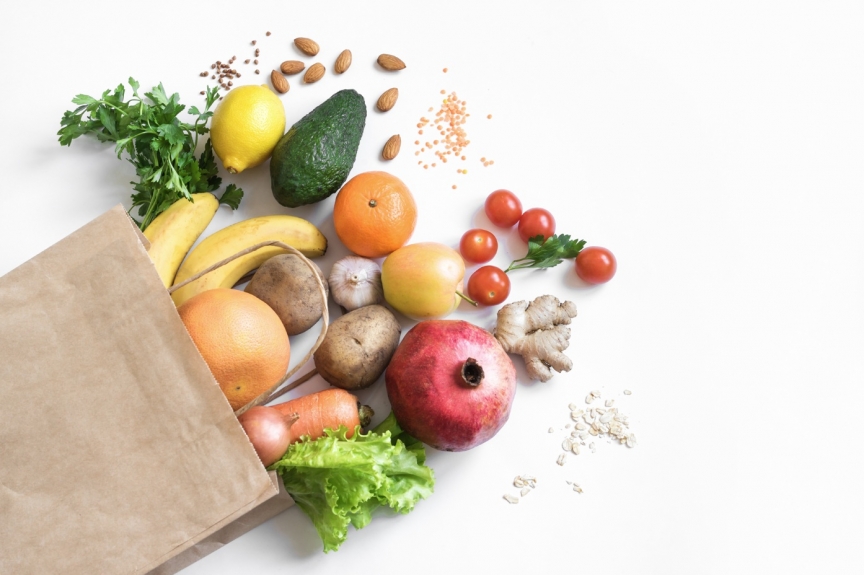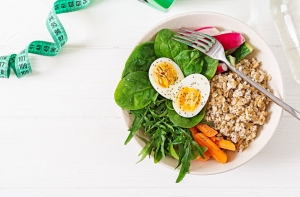Eating healthy doesn't have to drain your wallet. It's easy to believe that nutritious food costs more or takes too much effort, especially when life gets busy. But small changes in how you shop, plan, and cook can lead to better healthy food choices without the extra cost. With the right strategies in place, you can enjoy wholesome, satisfying meals without compromising your finances or your health.
1. Start With a Simple Meal Plan
If you often walk into the store without a plan, you're not alone. It's one of the fastest ways to overspend. A basic meal-planning routine helps you stay focused and avoid impulse buying. You don't have to map out every meal. Start with a few dinners you know you'll actually cook and eat.
Once you have your meals in mind, build your shopping list around them. Look at what you already have at home before buying more. Use up those sweet potatoes or frozen peas sitting in the back of the freezer. That's money saved without lifting a finger.
If you're not sure what to prioritize, board-certified registered dietitians often recommend building meals around foods that are both budget-friendly recipes and nutrient-rich, like dried beans, eggs, whole grains, and frozen vegetables. They're easy to work into your weekly menu and keep you full without costing much.
2. Stick to a Grocery List You Can Trust
Walking into a store without a list is like opening your wallet and hoping for the best. A written shopping list gives you structure and helps you skip the guesswork. Once you've made your food planning, write down only what you need.
Be specific. Instead of jotting down 'snacks,' write something like 'popcorn' or 'apples.' This prevents last-minute decisions that often lead to overpriced or ultra-processed foods. Group your list by sections: produce, grains, protein, frozen. This not only speeds up your food shopping trip but keeps you focused.
Also, don't ignore store-brand items. In most cases, they're made with the same ingredients as the name brands but cost less. Simple swap, instant savings that benefit your grocery budget.
3. Embrace the Power of Frozen and Canned
Fresh produce is great, but it isn't always the most affordable or practical option. Frozen vegetables and fruits last longer, cost less, and still offer plenty of nutrition. They're picked at peak ripeness, which means you're not missing out on quality.
Canned foods, when chosen wisely, can also be incredibly useful. Look for options without added salt or sugar. Rinse canned beans and veggies before using them to cut back on sodium. Canned fruit, tuna, tomatoes, or chickpeas can help you pull a meal together in minutes.
There's no need to avoid these options. They're often more convenient, less expensive, and just as good for you. Use them as staples in your pantry or freezer, and you'll always have a few solid ingredients ready to go.
4. Cook More Than You Need
Cooking every day isn't realistic for most people. But cooking in larger batches? That's saves both time and money. Instead of starting from scratch every night, make larger portions of meals that store well. Soups, stir-fries, roasted vegetables, and cooked grains are great places to start.
Leftovers don't have to mean the same meal on repeat. Roasted chicken can become salad, tacos, or wraps. A batch of quinoa can be turned into grain bowls, breakfast porridge, or veggie patties. With a little creativity, yesterday's dinner becomes today's shortcut.
Having food already prepped also keeps you from reaching for quick fixes like takeout or frozen dinners. It's one less decision to make and a smarter one at that. Meal prepping makes it easier to stay consistent and keep food expenses in check.
5. Learn To Love Simple Ingredients

Healthy meals don't need ten steps or fancy ingredients. Some of the most affordable dishes are the easiest to make. Think oats with fruit, rice and beans, or scrambled eggs with vegetables. Nothing complicated, nothing expensive.
When you build meals around what's already in your pantry, you spend less and reduce food waste. Get into the habit of checking what you have before planning the week. That half-used bag of lentils or lonely can of chickpeas might be all you need for a quick, filling meal.
Flavor matters, too. Basics like garlic, onions, dried herbs, or lemon juice can bring a meal to life without adding much cost. Focusing on whole foods from various food groups also helps maintain a balanced, healthy routine.
Wrapping It Up
Eating well on a budget doesn't mean sacrificing quality. It means thinking differently about how you shop, cook, and plan. With a few smart habits, you can stretch your grocery budget without giving up tasty recipes or nutrition.
You don't need fancy ingredients or a perfect plan. What you need is a system that works for you. One that's built on food you enjoy, meals you can manage, and choices that feel doable even on your busiest days.






